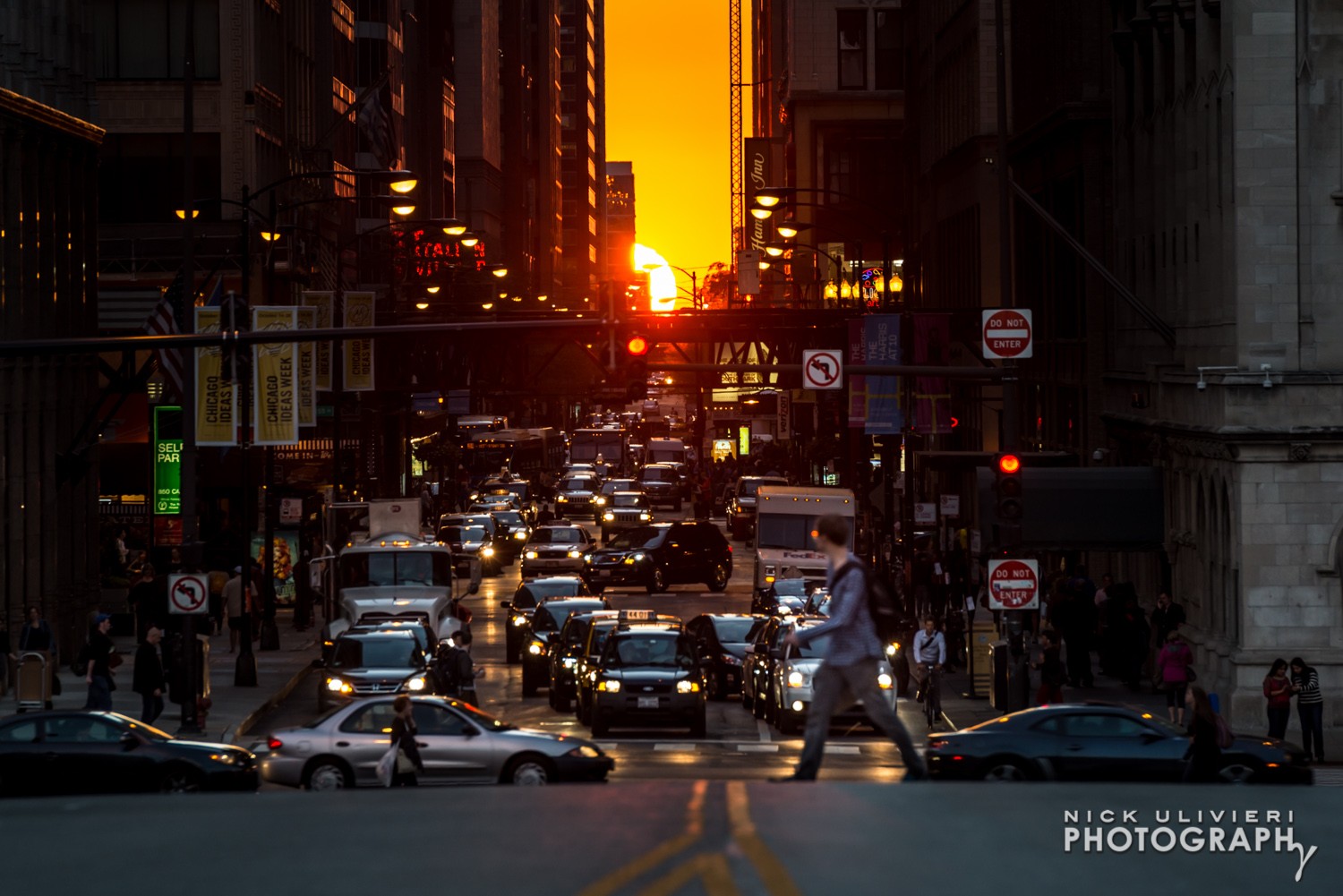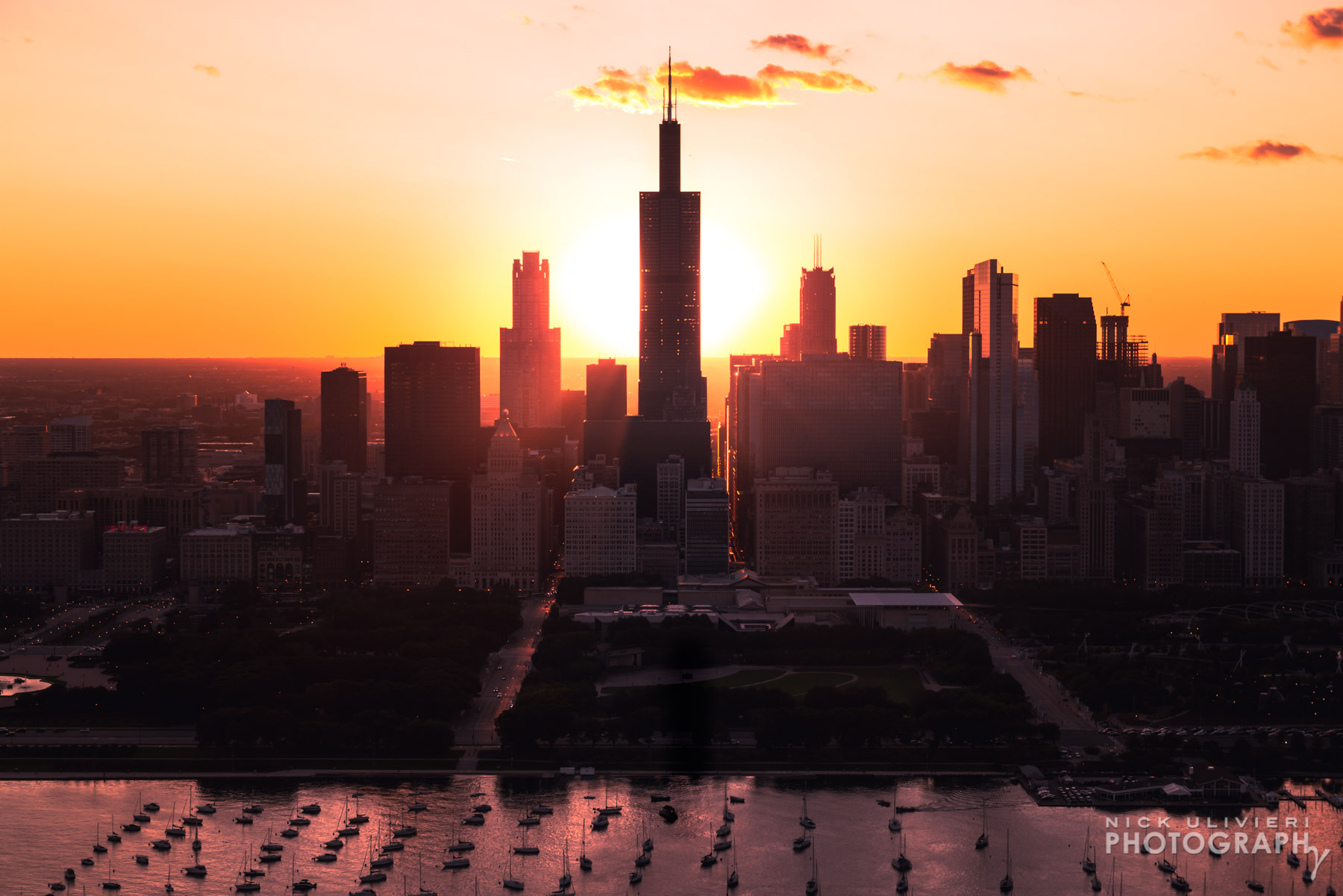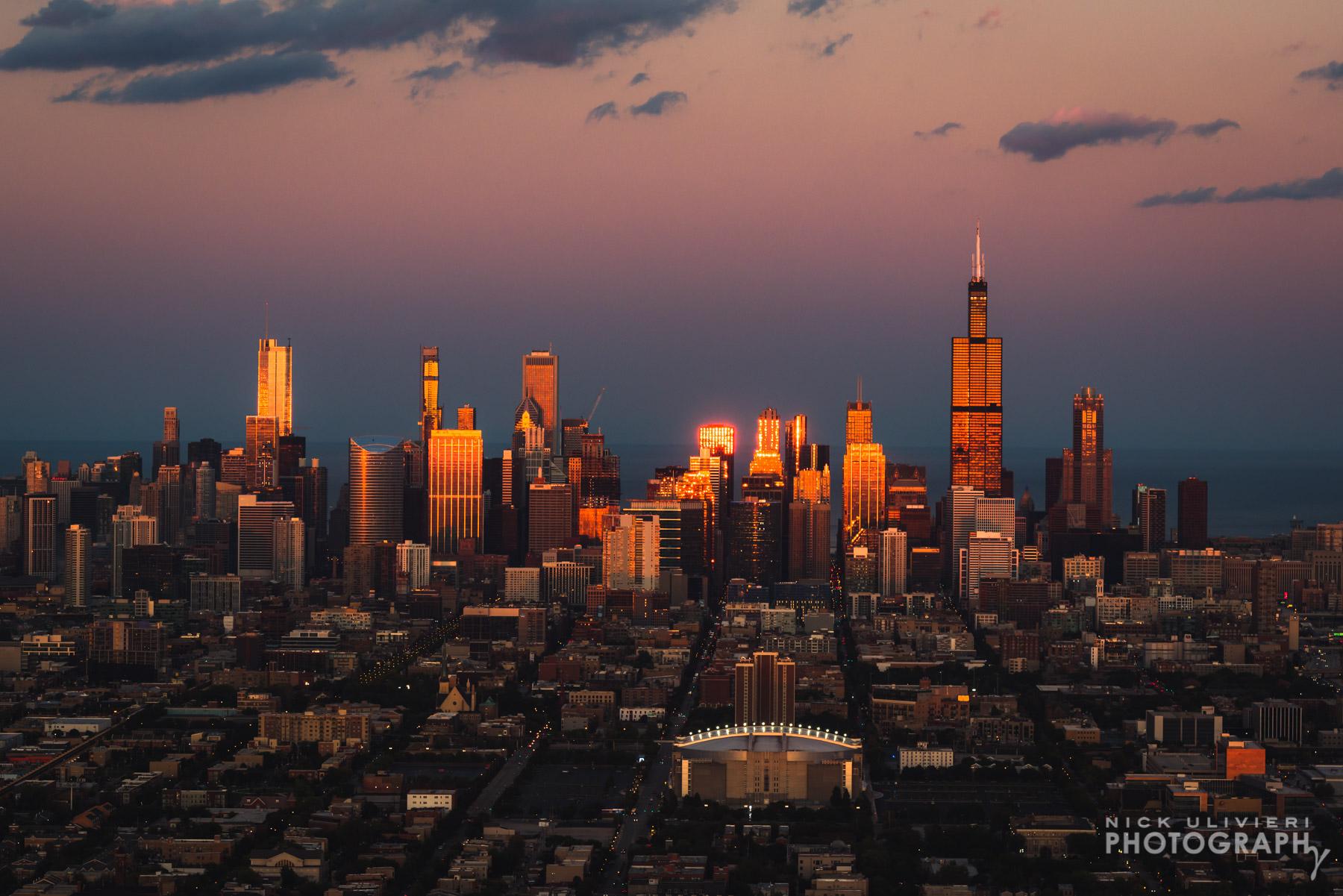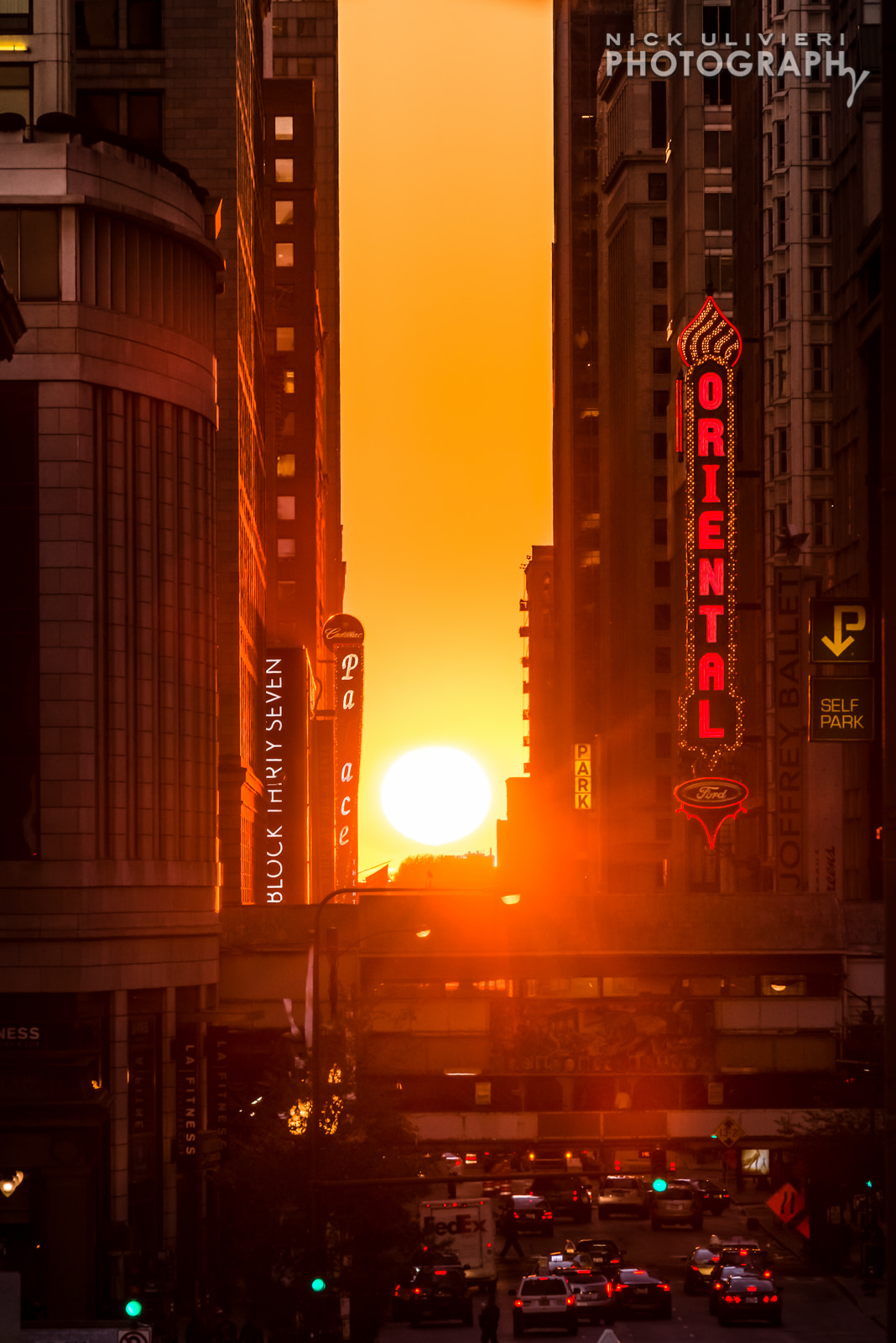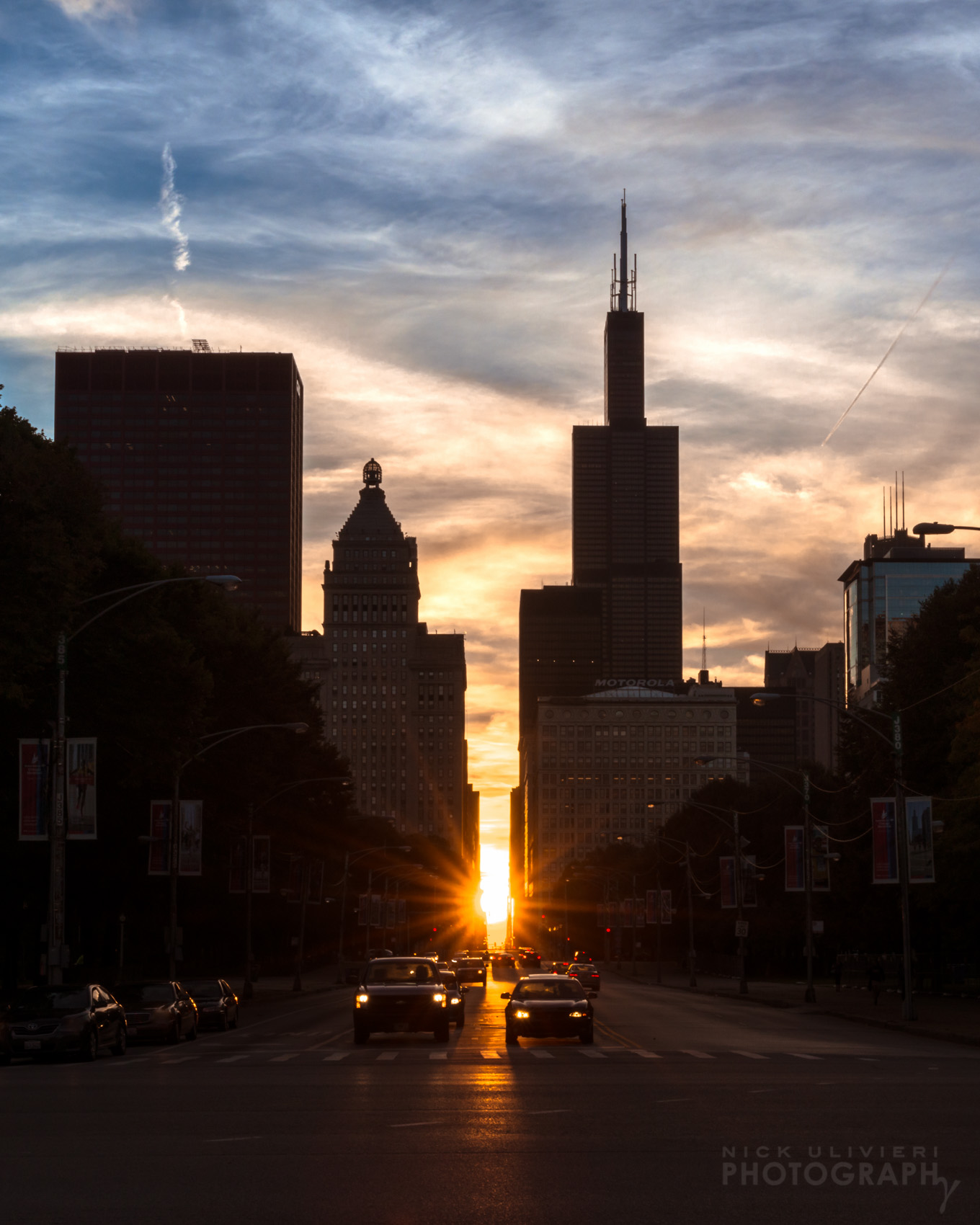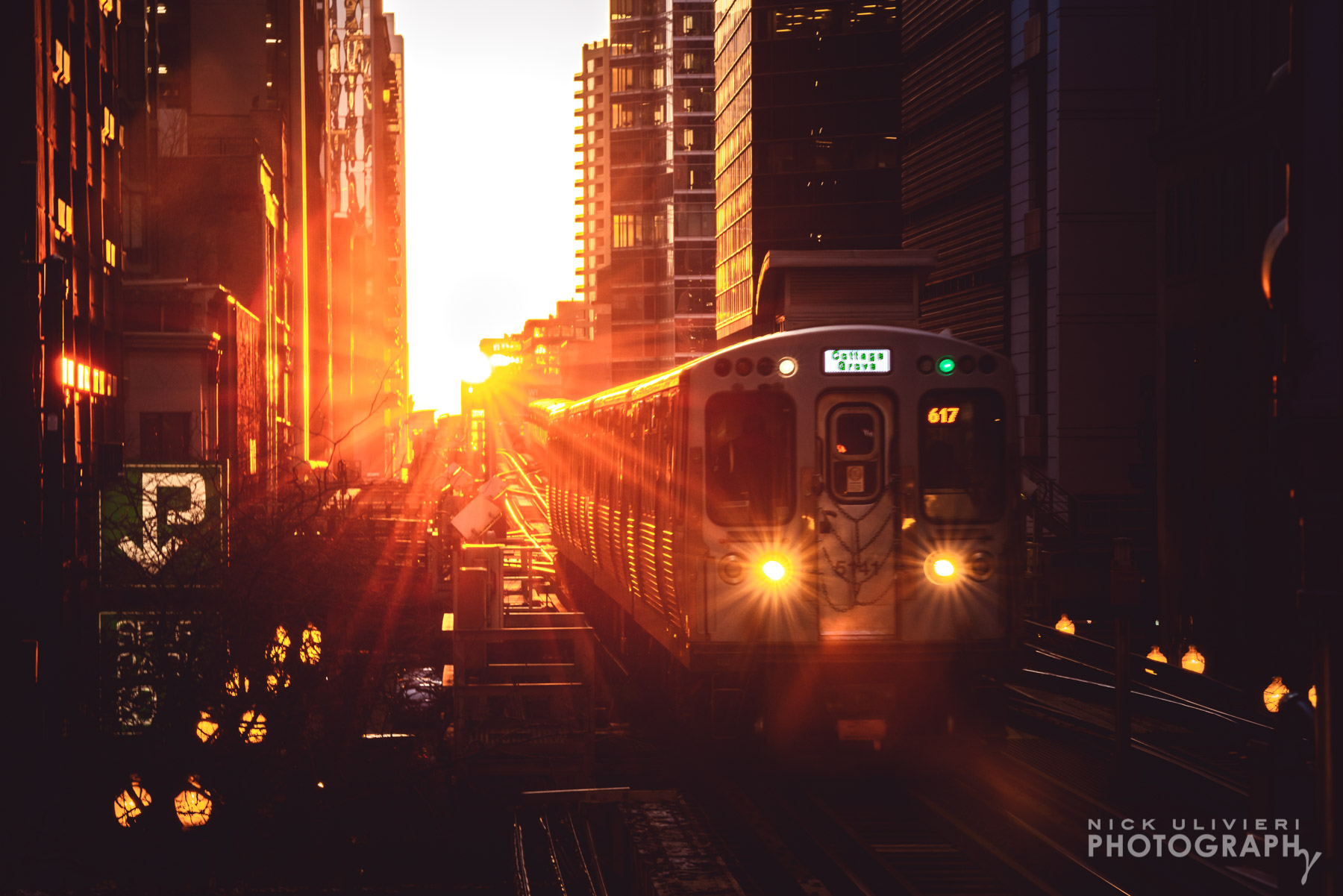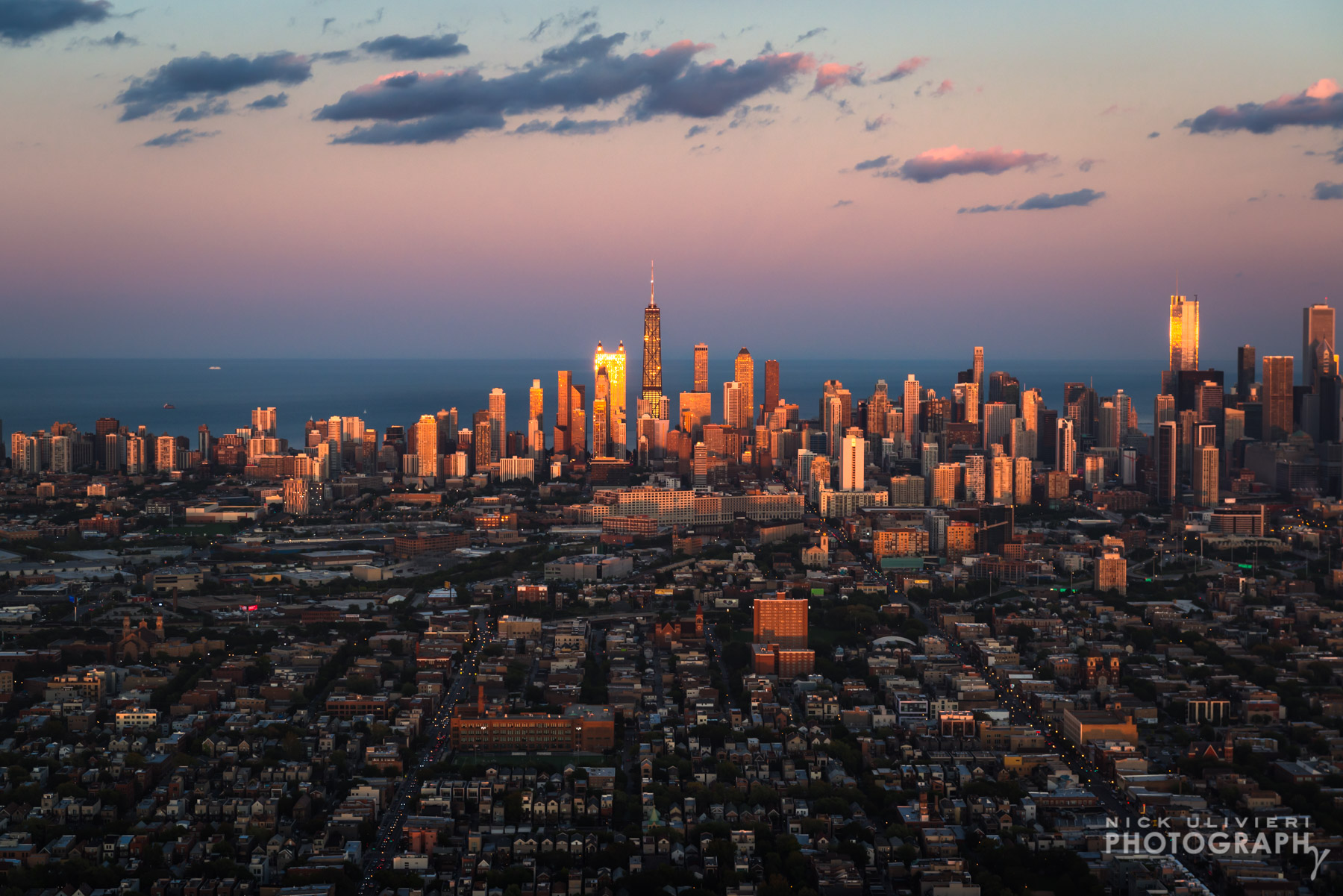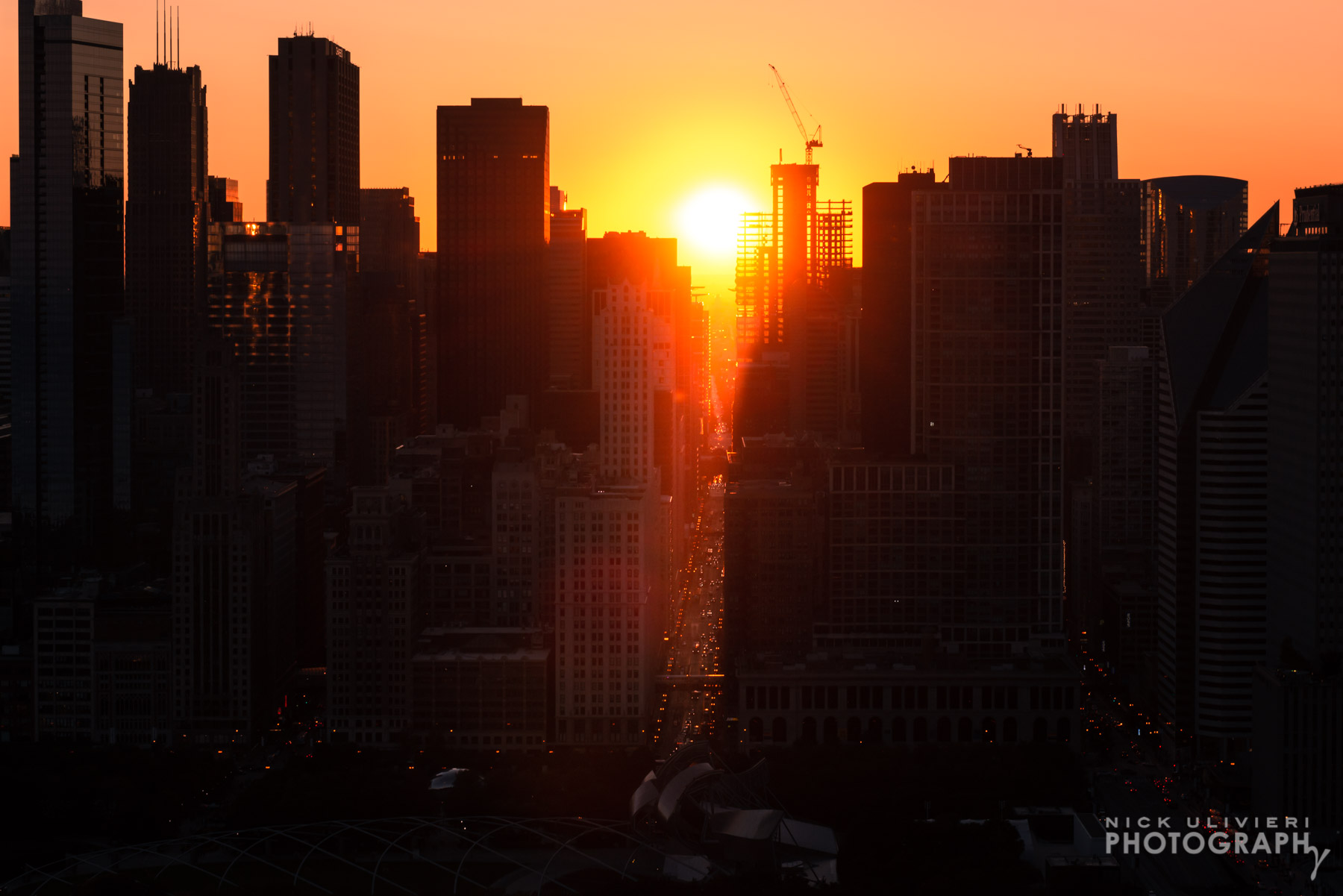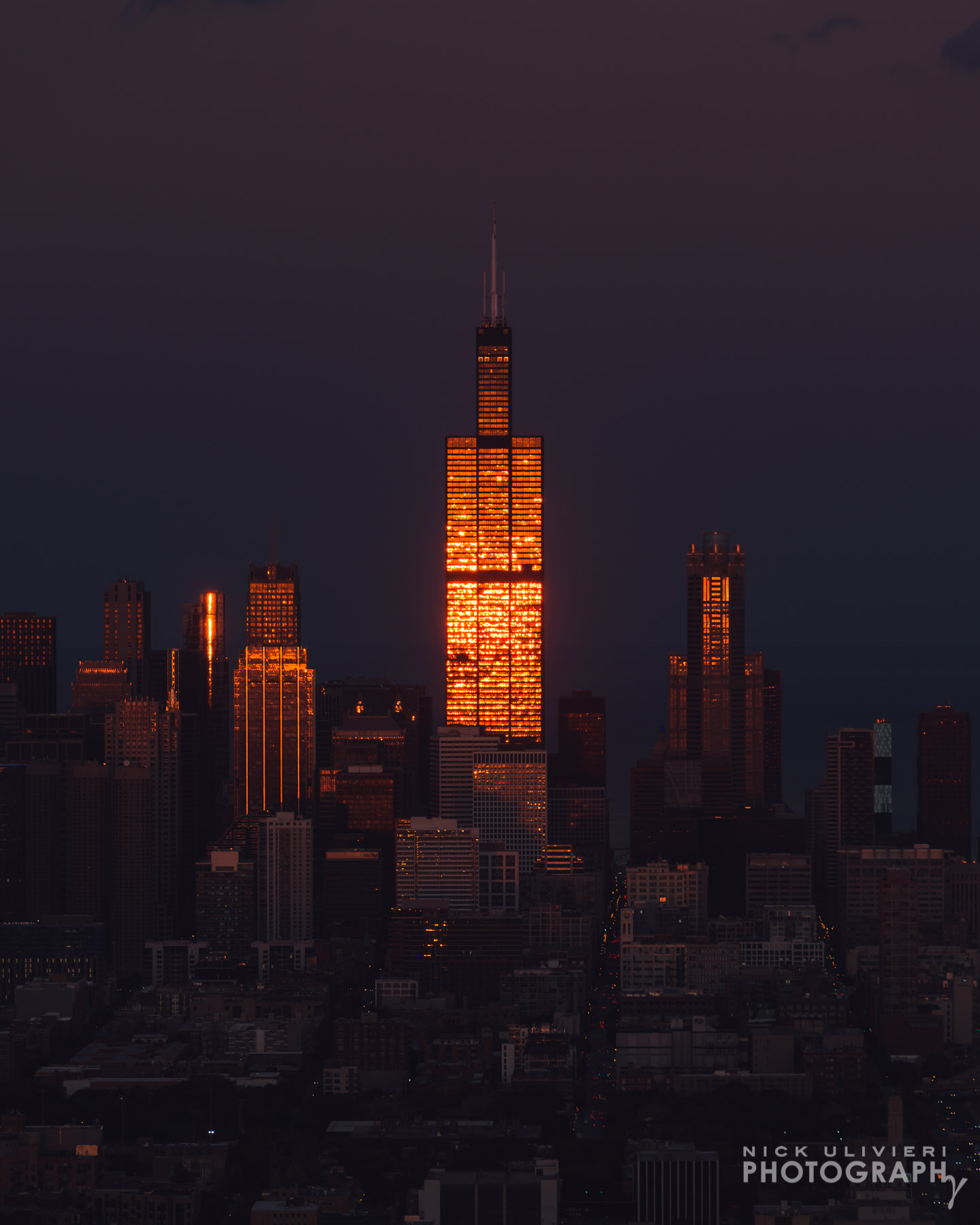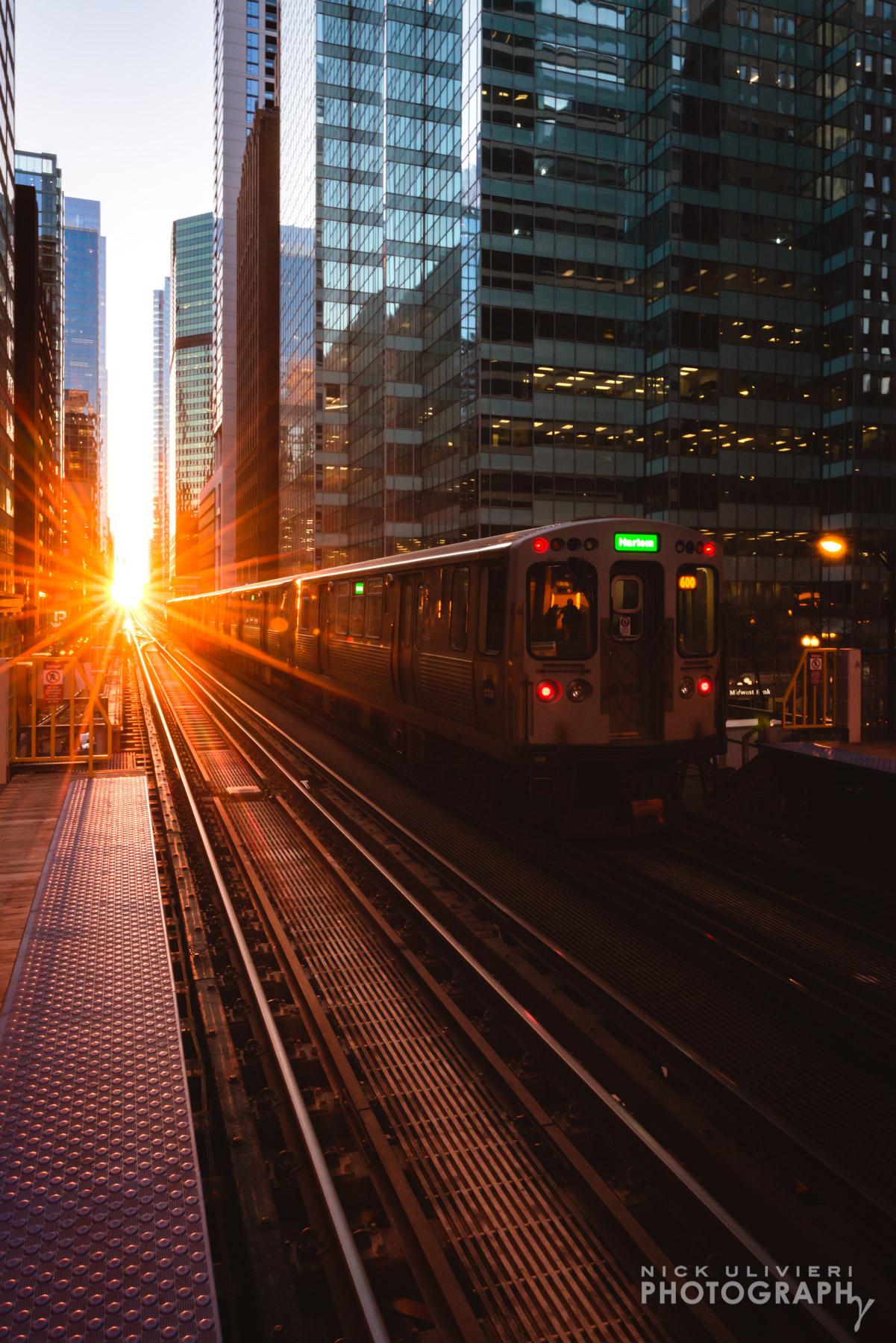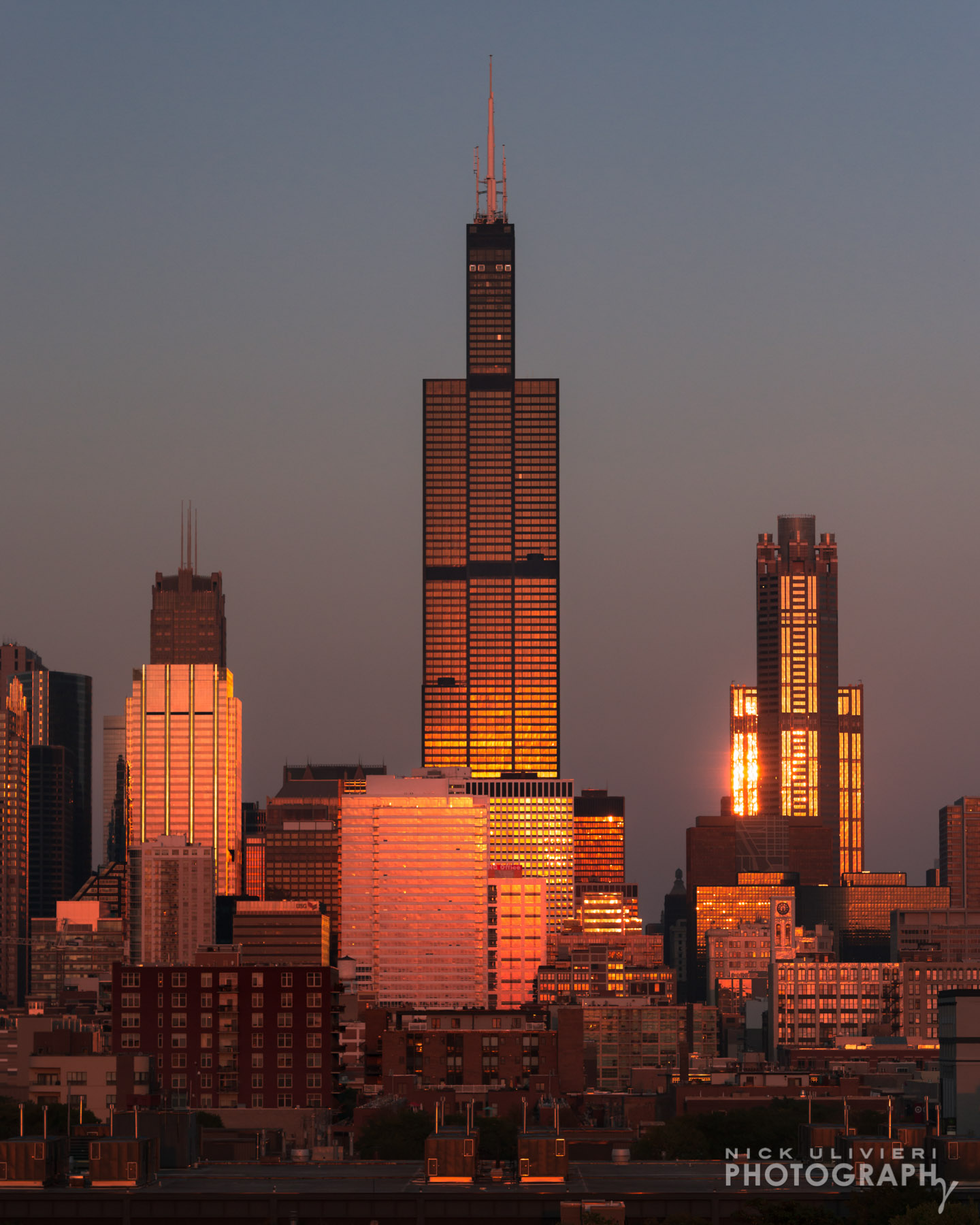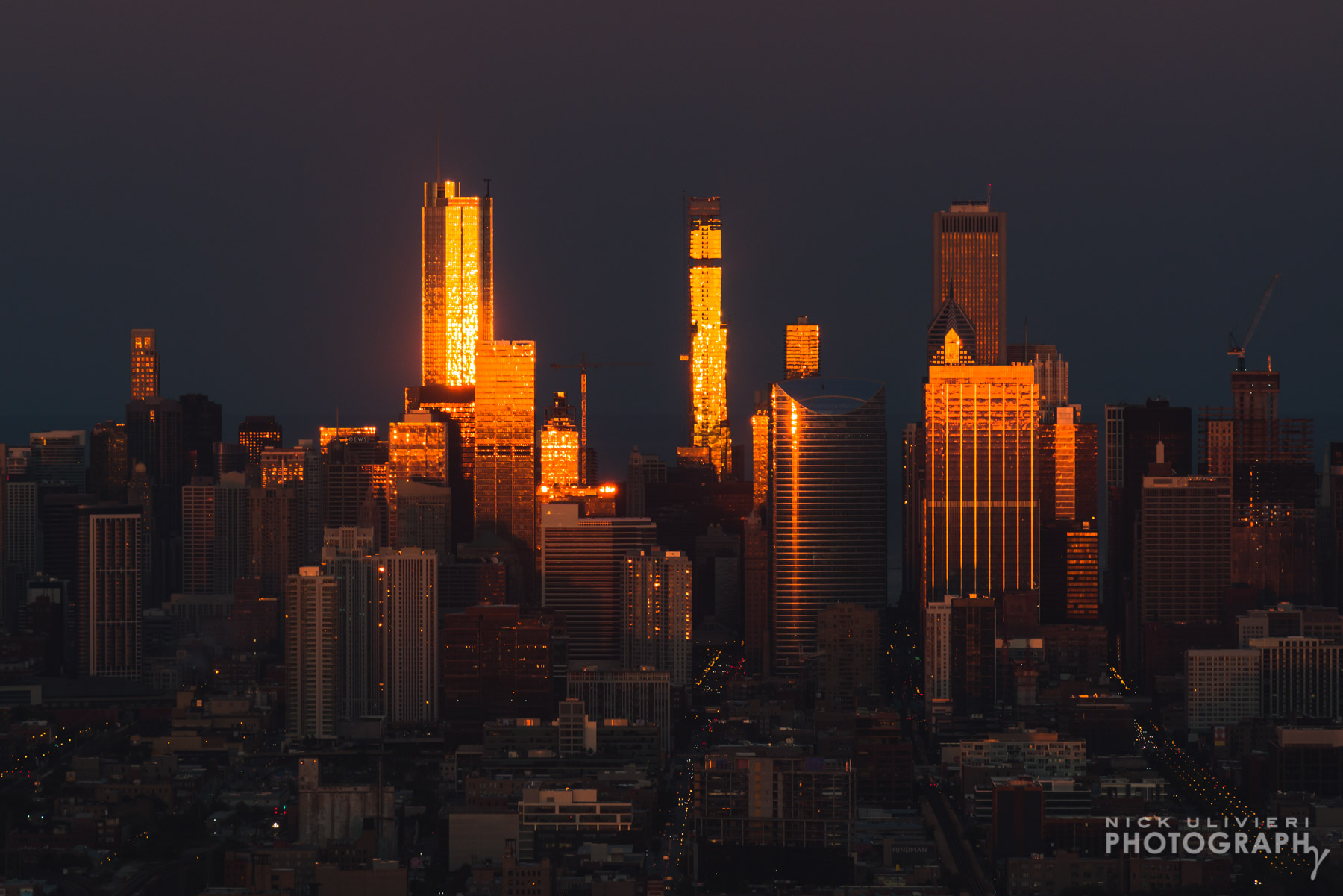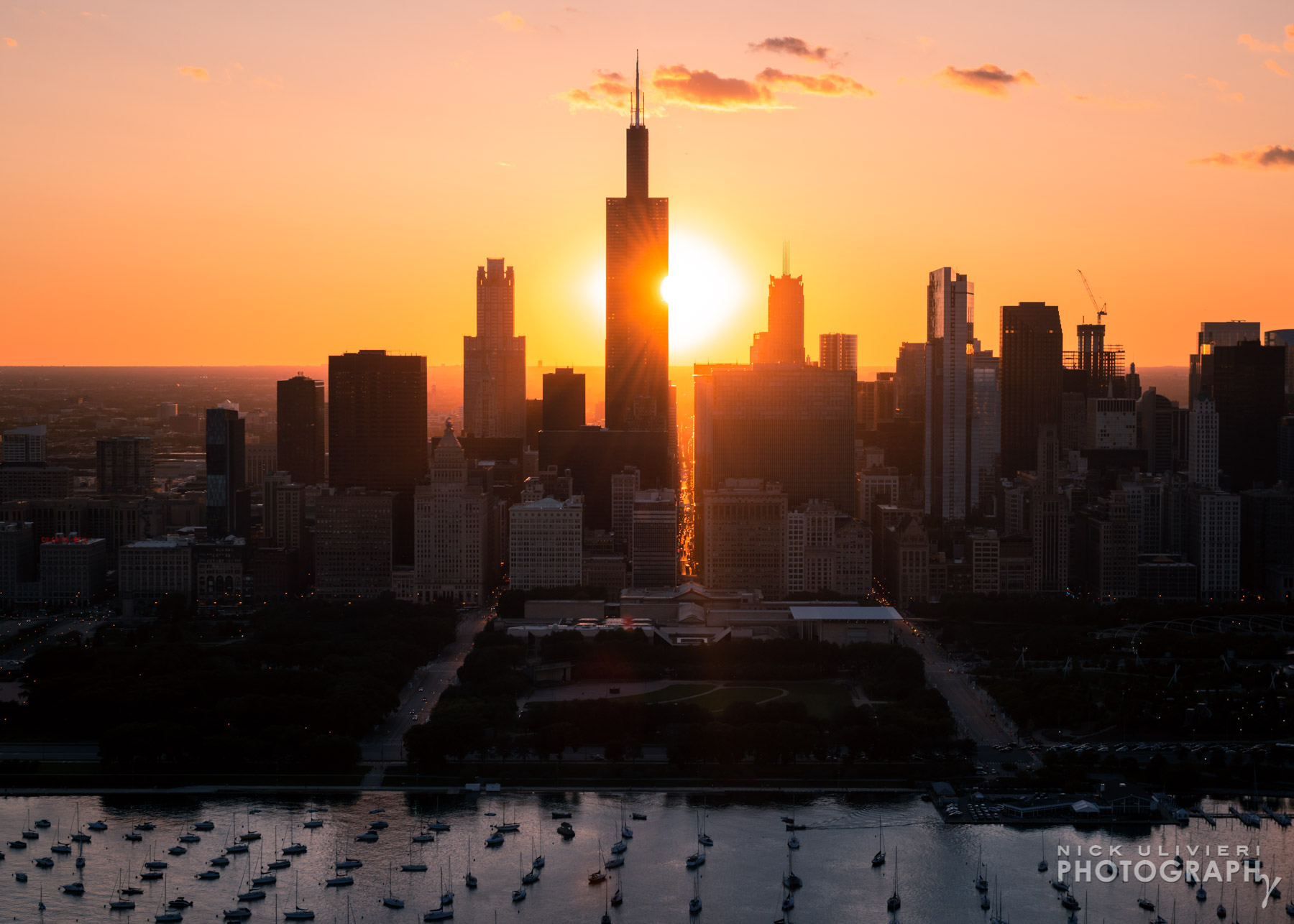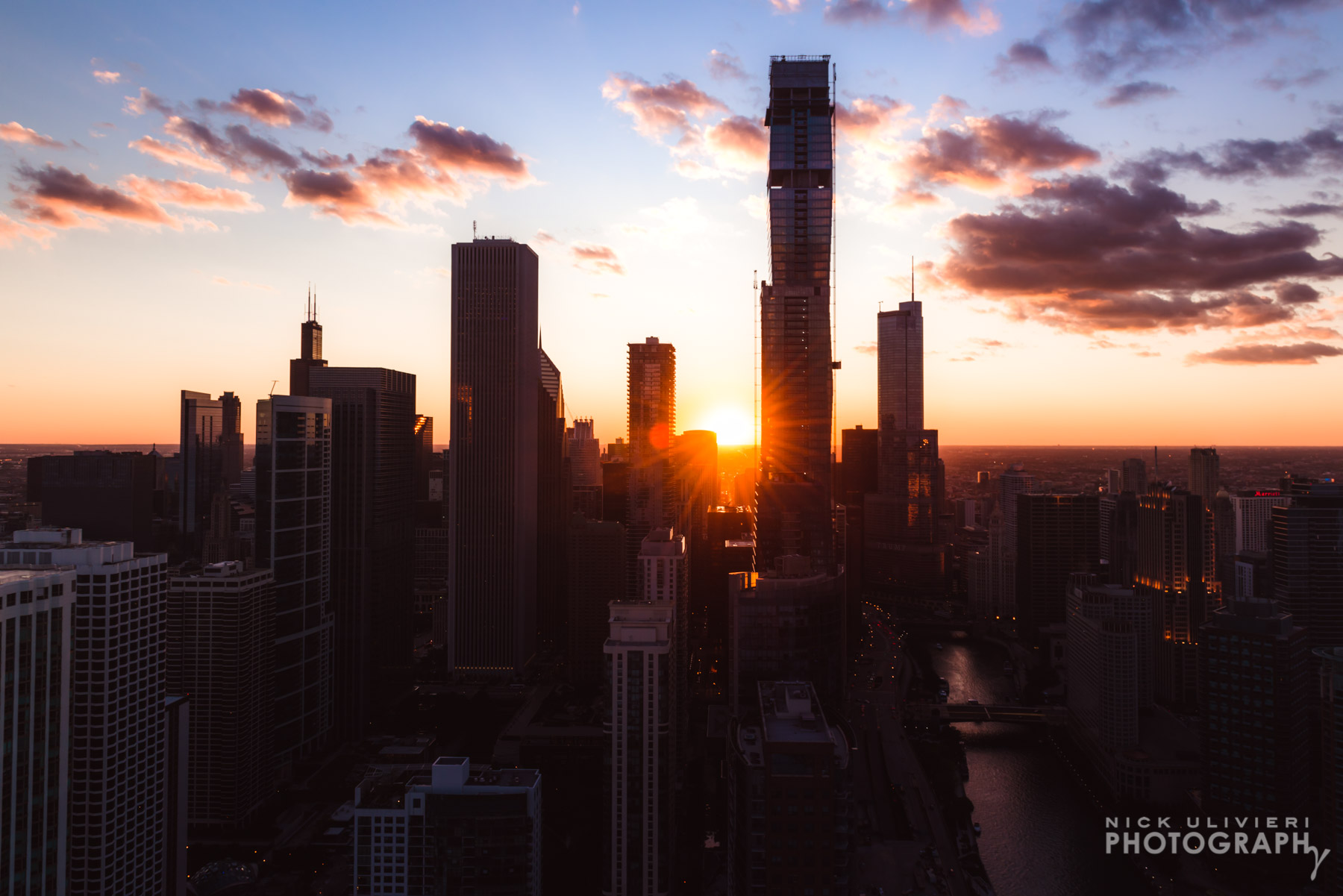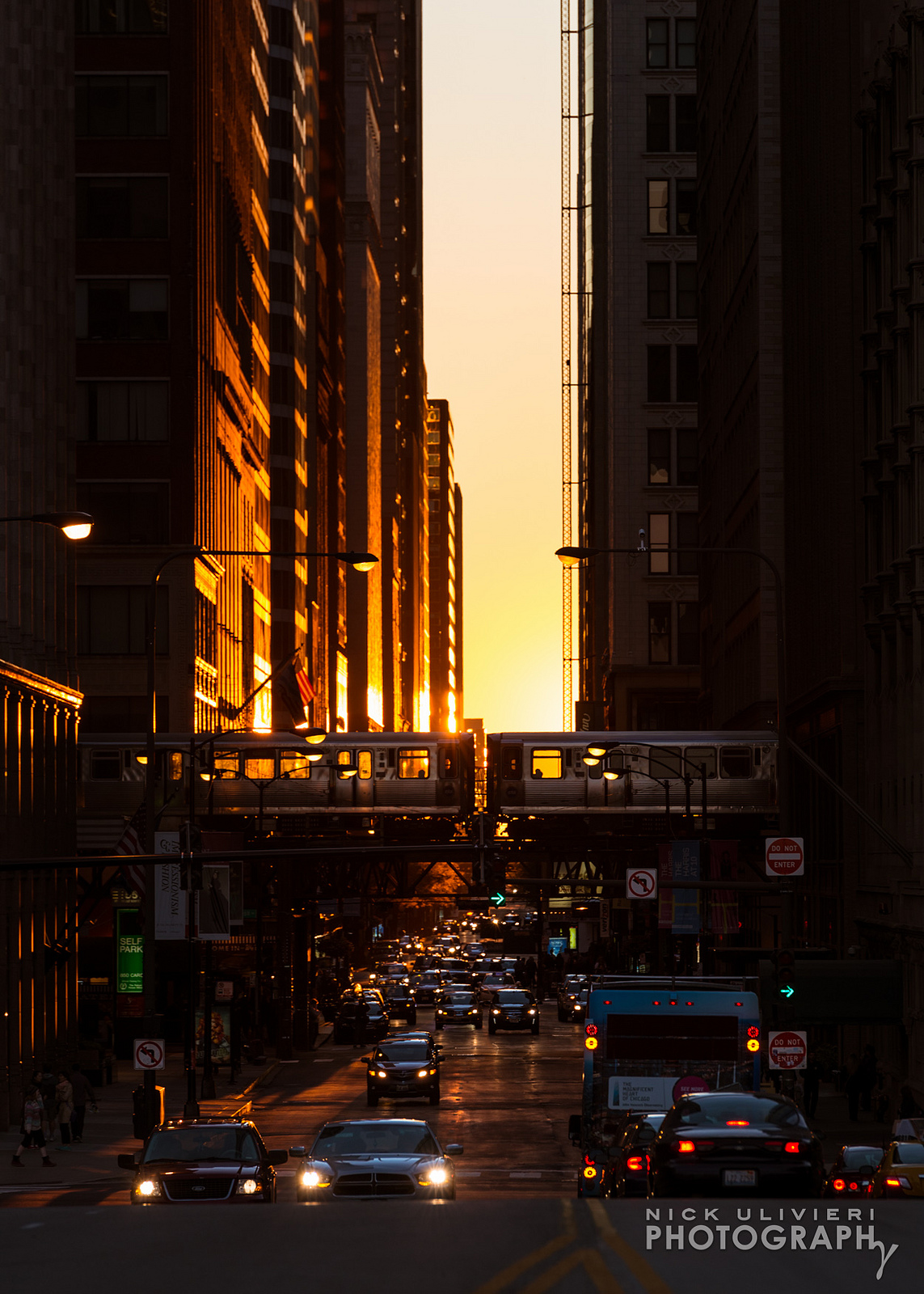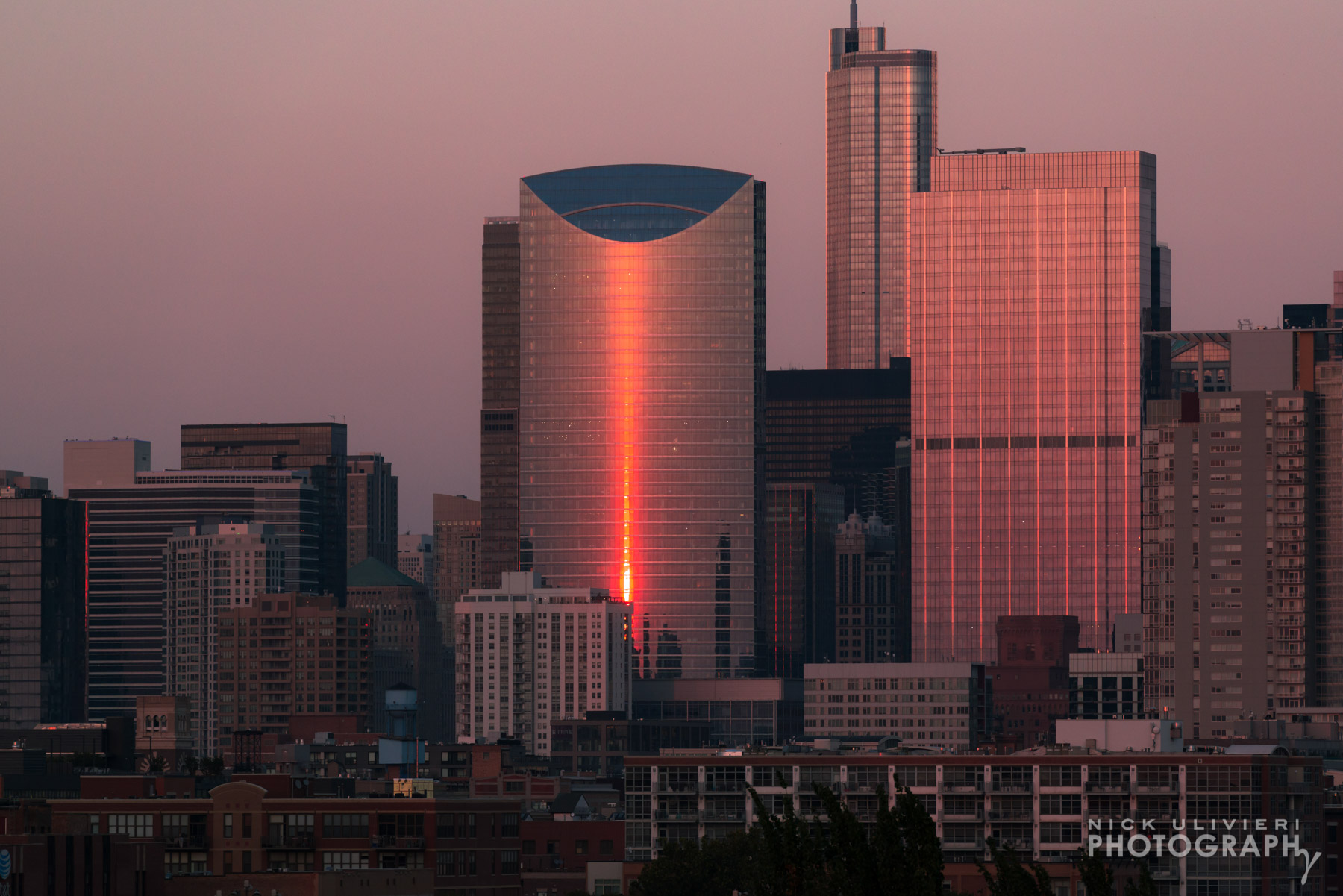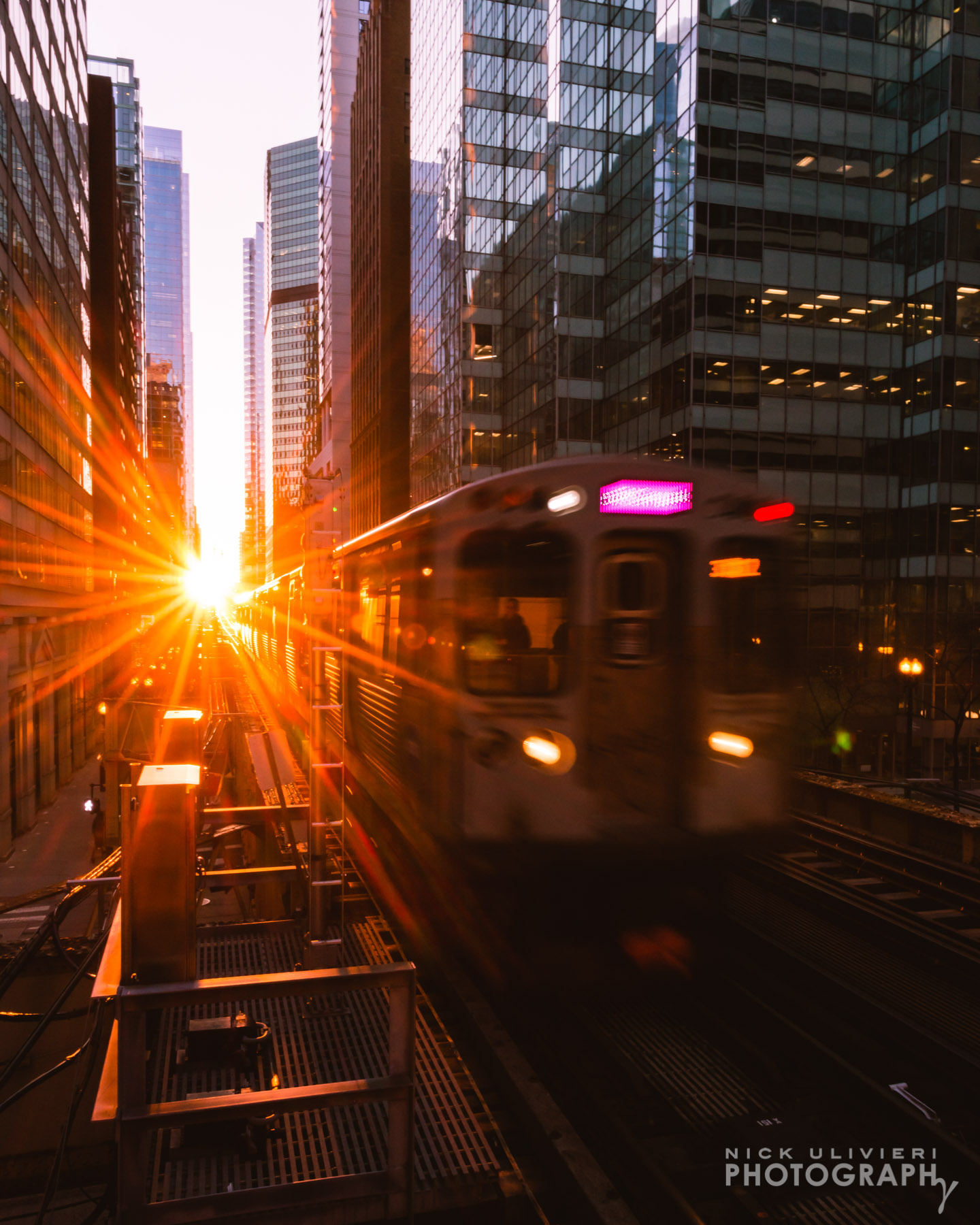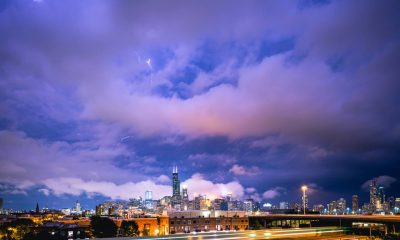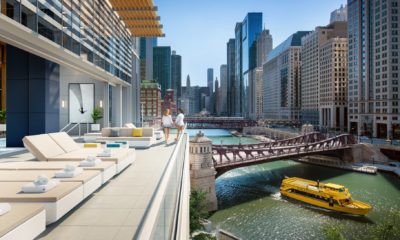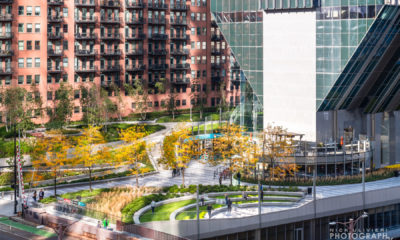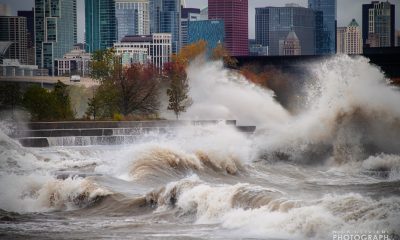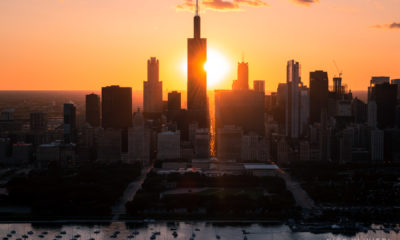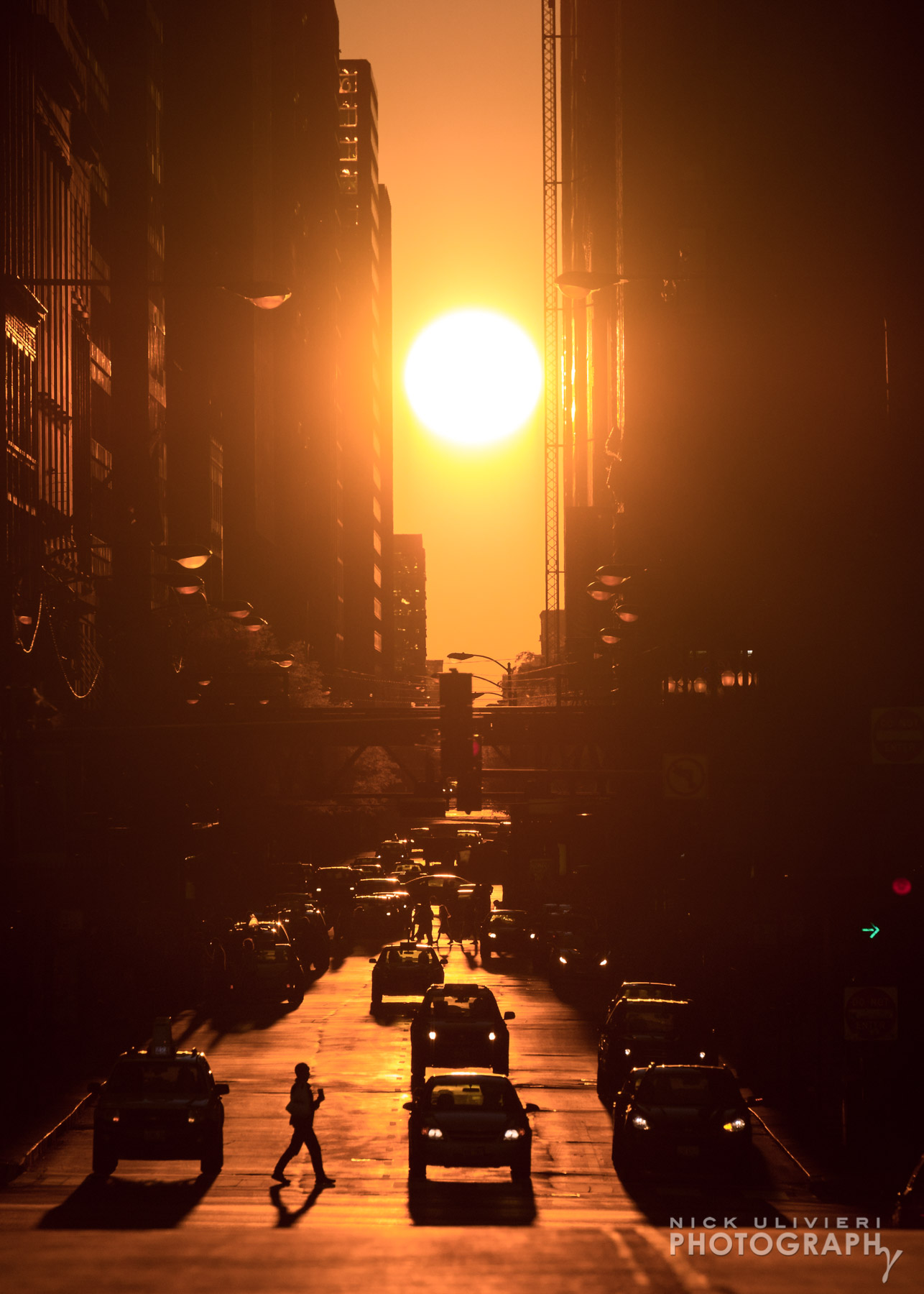
Chicagohenge – an equinox sunset.
For a few days around and during the autumnal and vernal equinoxes, the sun puts on a spectacular show as it seemingly rises and sets between the soaring skyscrapers of Chicago’s east/west streets. Since the first time I captured the phenomenon back in 2013, I’ve tried to take unique images every year thereafter (weather depending of course). Since then, I’ve shot it from various streets, a helicopter, and from an L platform. I’ve even shot the ‘Reverse Chicagohenge’ in which I captured the sun’s reflection on the west side of the skyline. Check out my photo gallery at the bottom of this post for more images.
During the Equinox, the tilt of the Earth’s axis is inclined neither away from, nor towards the sun, so the center of the sun is in the same plane as the Earth’s equator. For our purposes, the important part is that the the sun sets at 270° – exactly due west. But there’s a twist. It turns out that Chicago’s street grid is off by a fraction of a degree (~1.1° to be almost exact). So when looking west down the ‘concrete canyon’ for sunset you’re actually pointing ever so slightly southwest. This matters because ‘optimum’ Chicagohenge conditions vary based on which part of the year you shoot it.
To put another way, there are varying degrees of “Chicagohengey-ness” in the few days before and after each equinox that make each seasonal occurrence – and photo-op – unique. In spring, the Chicagohenge sunset might become clearly visible a day or two before the equinox as the sun marches north but may ‘peak’ on, or the day after the equinox. Conversely, Chicagohenge may peak a day or two before the fall equinox as the sun moves southward – because of that small iasliggnment in the street grid it may take an extra day after the fall equinox for the sun to appear between the skyscrapers.
The equinox varies by a few days from year-to-year (here’s why), and the exact moment of the equinox varies, too. So sunset times and azimuths will vary as well. Further, the height of the sun (the solar elevation) can dramatically change the mood and brightness of an image from day-to-day. Compare the feature image at the top of the blog post to the one below. What was ‘perfect’ one day – or year – may be off by a few hours or degrees the next. Your best bet is to get out there and witness it for yourself.
Technical details:
Shooting directly into the sun is tricky so here are some numbers to help you out. I photographed the feature image on 9/22/2013. The settings were 1/8000, f/5.6, ISO 320, at 200mm. The image directly above was taken on 9/25/2013 – just three days later – at 1/125, f/5.6, ISO 200, at 200mm. I point this out because it’s pretty spectacular to see just how much the sun moved in three short days. Additionally, I use PhotoPills to help me judge sunset times and the sun’s actual angle.

